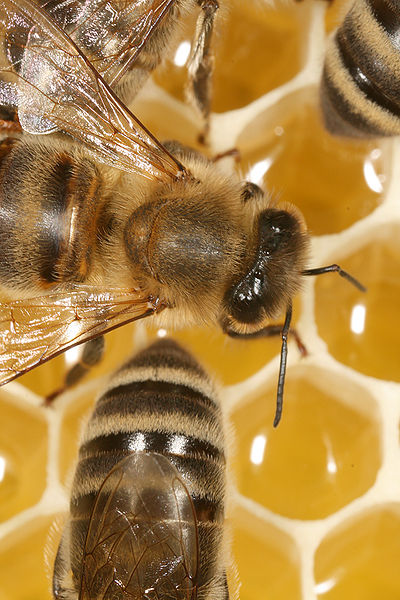Honey trap
Interview with
 Next we meet Professor Fran Ashcroft from Oxford University. She puts military neuroscience into historical context describing the first documented chemical warfare committed by the Greeks some 2300 years ago. Disrupting ion channels in nerve cells and affecting how these cells send messages in the brain and the body.
Next we meet Professor Fran Ashcroft from Oxford University. She puts military neuroscience into historical context describing the first documented chemical warfare committed by the Greeks some 2300 years ago. Disrupting ion channels in nerve cells and affecting how these cells send messages in the brain and the body.
Fran - All sorts of chemicals can interact with ion channels and there is one which is known as grayanotoxin which is found in the pollen of a certain species of rhododendron which is found on the Black Sea.
Its effects are best describe perhaps by Xenophon in 400 BC when he explains how his soldiers ate of the honey that was made from the pollen of these rhododendrons and found themselves with lots of diarrhoea and purging, and vomiting, and having convulsions. He has this marvellous phrase that they all lay on the ground in a state of great dejection.
Fortunately, they recovered and nothing really much happened for another 200 years until Pompey was invading that area. The Greeks remembered this story of Xenophon's and they collected the honey, and strewed it in the path of the oncoming troupes who ate it, were incapacitated and were then decapitated. So, this was perhaps one of the earliest forms of chemical warfare.
There's another coda to this story really and that is, that these days, of course the rhododendrons are still there, the honey is still produced by the local bees. The honeys blended in with many other honeys. So, the toxin is diluted out. But in that local area, you can actually get the honey that is made specifically from this particular species of rhododendron. It has a local vogue as an aphrodisiac which is rather unfortunate and there are even stories today of men who have taken some of these and ended up in a hospital rather acutely ill.
Hannah - Fran Ashcroft.










Comments
Add a comment